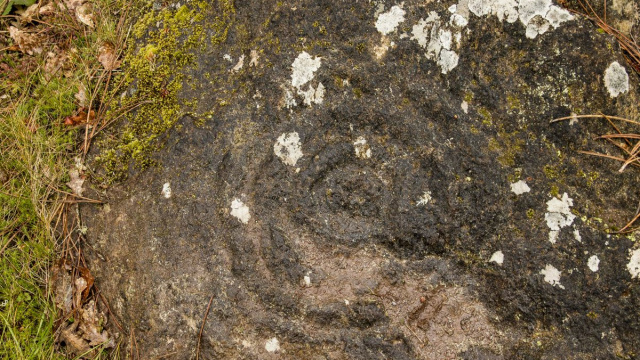Concello de Celanova

ROUTE OF THE PETROGLYPHS OF FREIXO
It is a short route, but of extraordinary historical and natural interest, ideal for landscape and heritage lovers. This trail connects two outstanding elements of the prehistory and history of the region: at the beginning, we find the petroglyphs of As Barroncadas, with enigmatic geometric motifs that transport us to the most remote past. At the opposite end, the Roman Bridge of Freixo awaits us, considered one of the best works of Roman engineering in Galicia, which testifies to the historical importance of the area. Along the way, the path winds through an area of great natural beauty, over the river Arnoia, which offers beautiful panoramic views of its valley and the lands surrounding Celanova. TO NOTE: - The route includes a detour to the Penedo de Nuestra Señora, a natural viewpoint with stunning views of the Arnoia valley. - It is an easy and attractive route, perfect for the whole family. - Caution is recommended at the Petróglifos das Barroncadas due to the risk of falling. ELEMENTS OF INTEREST: The Petroglyphs of Freixo, also known as those of As Barroncadas, form a set of six concentric circles with a central bowl, dating from the end of the Neolithic period, which represent one of the most outstanding examples of the prehistoric heritage of the area. The Freixo Bridge, located over the river Arnoia, conserves a large part of its original structure with four arches that reveal its connection with the ancient Via Nova. Declared a national monument in 1984, it is an exceptional example of Roman engineering. The Penedo da Nosa Señora, an impressive granite formation, offers spectacular panoramic views over the Arnoia valley and the lands of Celanova, being a natural viewpoint of great beauty. COMPLEMENTARY ACTIVITIES: The Archaeological Site of Castromao, ancient capital of the Coelerni tribe, is an impressive fortified city occupied between the 6th century BC and the 2nd century AD, located at an altitude of more than 700 metres above sea level and with wide views of the province. Celanova is home to the Monastery of San Salvador, founded by San Rosendo in 936, and the Chapel of San Miguel. In Vilanova dos Infantes, the medieval village with the Torre del Homenaje is a must-see, especially during "Raigame", an ethnographic pilgrimage on the Day of the Galician Letters. The Casa dos Poetas completes the experience with guided tours and exhibitions.

















